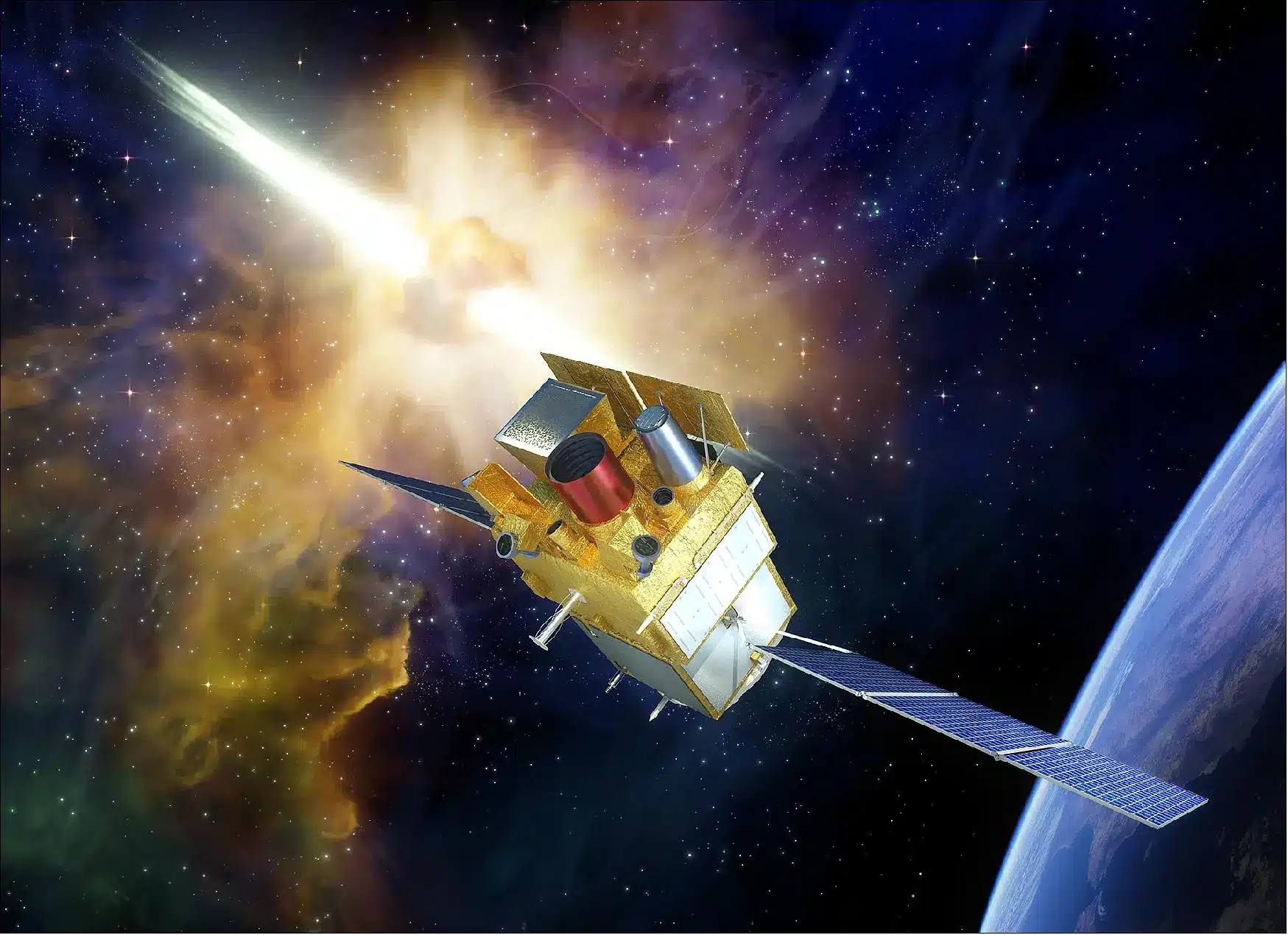About Space Variable Objects Monitor (SVOM):
- It is a French-Chinese satellite which aims to detect and study gamma-ray bursts.
- It was launched by a Long March-2C rocket from the Xichang Satellite Launch Center in southwest China’s Sichuan Province.
- It is a 930-kilogram satellite carrying four instruments – two French and two Chinese.
- The satellite has been sent into an orbit over 600 kilometers above Earth and has a designed life of five years, though scientists expect it could be operational for as long as 20 years.
- Gamma-ray bursts (GRBs):
- GRBs generally occur after the explosion of huge stars – those more than 20 times as big as the sun – or the fusion of compact stars.
- The extremely bright cosmic beams can give off a blast of energy equivalent to over a billion billion suns.
- Observing them is like “looking back in time, as the light from these objects takes a long time to reach earth.
- The rays carry traces of the gas clouds and galaxies they pass through on their journey through space – valuable data for better understanding the history and evolution of the universe.
- GRBs are notoriously hard to catch as they can appear anywhere in the sky and last for just a few seconds. They are readily absorbed by the Earth’s atmosphere, so the only way to record them is to place probes in space.
- SVOM has the potential to unravel several mysteries in the field of GRBs, including detecting the most distant GRBs in the universe, which correspond to the earliest GRBs.
- The data gathered will help test the laws of physics under conditions that cannot be replicated on Earth and provide insights into the dynamics of the universe.
Q1: What are Gamma Rays?
Gamma rays have the smallest wavelengths and the most energy of any wave in the electromagnetic spectrum. They are produced by the hottest and most energetic objects in the universe, such as neutron stars and pulsars, supernova explosions, and regions around black holes. On Earth, gamma waves are generated by nuclear explosions, lightning, and the less dramatic activity of radioactive decay.
Source: Rocket carrying French-Chinese satellite launches from southwestern China to study gamma-ray bursts
Last updated on November, 2025
→ Check out the latest UPSC Syllabus 2026 here.
→ Join Vajiram & Ravi’s Interview Guidance Programme for expert help to crack your final UPSC stage.
→ UPSC Mains Result 2025 is now out.
→ UPSC Notification 2026 is scheduled to be released on January 14, 2026.
→ UPSC Calendar 2026 is released on 15th May, 2025.
→ The UPSC Vacancy 2025 were released 1129, out of which 979 were for UPSC CSE and remaining 150 are for UPSC IFoS.
→ UPSC Prelims 2026 will be conducted on 24th May, 2026 & UPSC Mains 2026 will be conducted on 21st August 2026.
→ The UPSC Selection Process is of 3 stages-Prelims, Mains and Interview.
→ UPSC Result 2024 is released with latest UPSC Marksheet 2024. Check Now!
→ UPSC Prelims Result 2025 is out now for the CSE held on 25 May 2025.
→ UPSC Toppers List 2024 is released now. Shakti Dubey is UPSC AIR 1 2024 Topper.
→ UPSC Prelims Question Paper 2025 and Unofficial Prelims Answer Key 2025 are available now.
→ UPSC Mains Question Paper 2025 is out for Essay, GS 1, 2, 3 & GS 4.
→ UPSC Mains Indian Language Question Paper 2025 is now out.
→ UPSC Mains Optional Question Paper 2025 is now out.
→ Also check Best IAS Coaching in Delhi

















